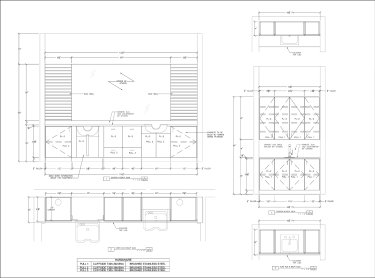
04
May
Contractors and suppliers produce shop drawings which make their job easy. Currently, shop drawings are formed through CAD software such as Revit or AutoCAD, helping to convey concepts and ideas faster. It’s important to get familiar with the technical specifications and thus you can use the software in your way. The followings are some advantages of shop drawings.
Presenting design information
Shop drawings are the guideline for manufacturers, displaying a scaled synopsis about how to assemble the final product. It also consists of other information like the followings:
- What components to use
- Product dimensions
- Hidden materials highlighted by dashed lines
- Desired weight of the product
- Joints and connections in the product
- Product particular treatment like ‘galvanizing steel’ and so on
Creating duplicates
Shop drawings are very particular in information and instructions, so the manufacturing procedure can be duplicated several times for creating the same product each time. This is quite effective, especially if there is a need for many of the same element such as roof joists. Moreover, if the manufactured element turns to defect somehow, it can easily be duplicated. There is no doubt that duplication saves money as well as time if the plan is about building the same houses.
Documentation
If any problem occurs, for instance, a steel column is imparted on site and discovered to be taller than the actual requirement, the technical designer can use the shop drawing as a supporting document, determining the cause and time of the flaw.
Anyone can make the fault, the manufacturer, or the designer, but the documentation will certainly provide a solution that can arise and help to determine what is more to do correcting the error. To give an example, the exact dimensions in the drawing is useful for instructing the installers, so they can cut off a portion of the column, ensuring it fits the drawing as desired.
Component accounting
In such cases, where a specifically large-scale structure requires on-site assembling of multiple loose parts, as it is quite large and difficult to deliver in a single piece, then every individual element can be portrayed as a section and designated ‘section A’ and ‘section B’ and so on. An overall drawing can support this, displaying how the ultimate structure should look and function after assembling all the parts.
This also applies to the entire construction itself where every part can be categorized through a set of drawings and each set of drawings can be embodied into a schedule with delivery dates.
Costing accuracy
In the manufacturing business, expenses are a very important factor to consider carefully. Shop drawings are useful for accurately determining the material costs, help to prevent too little or too much of a component being ordered, overstocking of items as well as a waste of time.